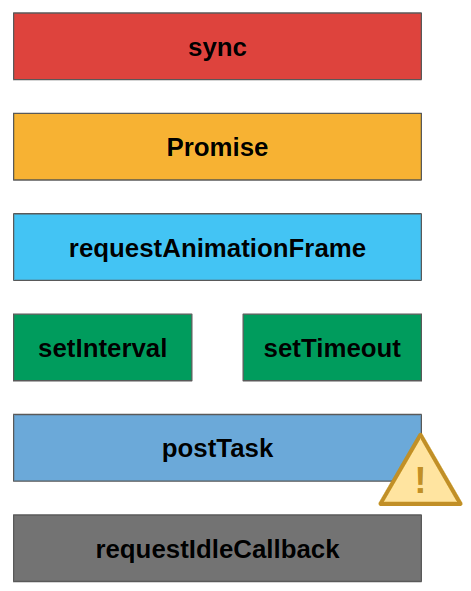Rendering issues in Angular
Too many subscriptions
A common scenario is to use multiple async pipes to subscribe to either multiple, or the same observable throughout different parts of a components template.
<div class="item" *ngFor="let item of items$ | async"></div>
<div class="loader" *ngIf="(items$ | async).length > 0"></div>
Besides being not readable, it is also very inefficient. Unshared observables will most likely and each async
will definitely run the same code multiple times.
NgZone
Another thing to consider is, the AsyncPipe relies on zone.js to be present and aware of the value change bound to the async pipe.
It doesn't really trigger change detection by itself. Instead, it marks the component and its parents as dirty, waiting for the Zone to trigger change detection.
This is especially bad for leaf components, as the async pipe will mark the whole component tree as dirty before being able to update the desired template.
Also in case you want to create a zone-less application, the AsyncPipe won't work as desired.

Binding reactive sources
The current way of binding reactive sources to a view in angular looks like that:
{{ heroData$ | async }}
<ng-container *ngIf="heroData$ | async as data">{{data | json}}</ng-container>
<hero-list-component [value]="heroData$ | async"></hero-list-component>
The problem is, async pipe flags the component and all its ancestors as dirty.
It needs zone.js microtask queue to exhaust until ApplicationRef.tick is called to render all dirty marked
components from top to bottom.
This more often than not causes a huge amount of unnecessary re-renderings of components which didn't had any changes in the first place.
While this approach is pretty convenient to use,
since the rendering gets brute-forced on any change, making REALLY sure anything gets re-rendered.
Heavy dynamic and interactive UIs suffer pretty bad from zone.js ChangeDetection.
This can lead to very bad performance or even unusable applications.
Furthermore, it turns out the async pipe does not work in zone-less environments as well as many third party
software.
The comprehensive toolset of @rx-angular/template solves most of those issues with or without zone.js.
NgZone
NgZone assumes that DOM events like click, resize, focus, blur (+ EventEmitters, setTimeOut, Promise.resolve(), etc)
are always used by developers to dispatch actions which leads to state mutation. If one of those
get bound to/executed, a re-rendering for your component and all ancestors will be scheduled by NgZone.
The current way of binding events to DOM:
<button (click)="doStuff($event)">click me</button>
<!-- a click will automagically schedule a re-render for you -->
One could argue this is helpful in way that it automagically renders changes for you.
However, this is not always the case. And we came to the conclusion this is not a good approach by any means. In reality you will encounter a massive amount of over-renderings of pretty much any of your components. This can be irrelevant on hardware accelerated powerhouses, user experiences will suffer a lot on lower end devices.
On top of that, we think that this technique inserts way too much magic in the framework itself as well as keeping away crucial control over what happens in your application.
You can play around in the demo apps (experiments, template-demo) if you want
to get a clearer picture of what actually happens.
The Deep Dive Podcast, Episode 1: Mythbusting the AsyncPipe with guests @angularlicious and @Michael_Hladky
The long term goal should be to eliminate NgZone by using the 'noop' NgZone. However, this is only in a few scenarios
a feasible option. Most third party libraries
rely on some NgZone callbacks (including @angular/components & @angular/cdk pretty heavily). Some of the components will
stop working at all after using 'noop' NgZone.
Nevertheless, if you know what you do and want to build a render performance critical application, @rx-angular/template
is the perfect candidate for being its base.
Some further information about NgZone (zone.js):